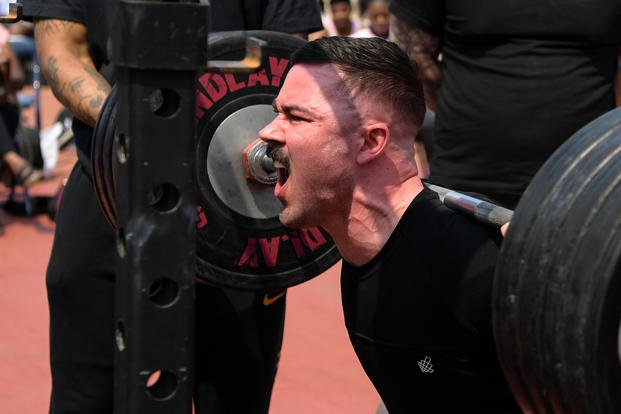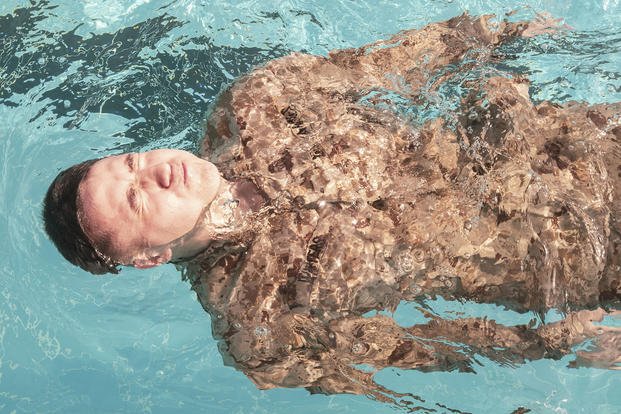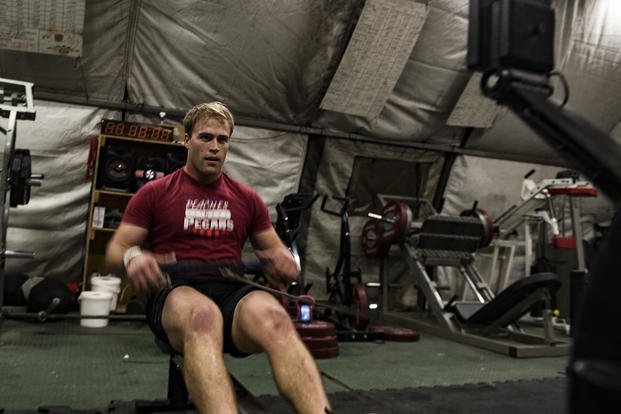Here is a question I get often about the way a person prepares for special ops-type training programs for military and law enforcement SWAT teams:
Stew, I'm going to guess you've already answered this question somewhere, so forgive my redundancy. I'm 27 and looking to get into the Navy -- possibly going for diver or SEAL. I'm looking for the best workout to prepare me for the rigors of spec ops. Even if I don't go into those fields, I want to be able to perform at that level. I steer toward programs with weights like CrossFit and Sealfit. My question is, what fitness regimen will best help me prepare?
Good question, and the answer is, "It depends."
It depends on your athletic history and where your foundation of fitness is focused. For instance, I often get former football players, swimmers, wrestlers, bodybuilders, powerlifters, runners and some students who have no athletic history at all. The answer will be different for each of these groups.
People have been graduating from tough special operations programs long before there were specific books, DVDs, websites and pre-spec-ops training programs. The best answer must contain a foundation of fitness and construct a peak on it so you perform at your absolute best without incurring an overuse injury.
This can be done in a relatively short period of time if you have that foundation, but it requires perfect balance between weights, high-rep calisthenics, long-distance running, swimming and rucking, rope climbs, obstacle courses, etc.
Creating a high muscle endurance/strength to body-weight ratio is also vital for maneuvering through obstacles and combat conditioning courses. All of these depend on where your present strengths lie. What is your foundation of fitness built upon?
Another factor is mental toughness. This is absolutely the most difficult element to measure. These special-ops training programs will push you to your physical limit. Will you have the mental toughness to keep moving and not quit? The better shape you are in, the easier the mental challenges become.
But here is the difference in the way you must prepare for long and intense spec-ops programs:

Football or Powerlifting Background
This body type has a fitness foundation of speed, power and strength. These are great assets to have, but you do not need to cultivate them further in your quest to join a special-ops unit. Many football players and powerlifters think a 1.5-mile timed run is long. That mindset must change so that run becomes a relatively short distance and your speed increases. Many programs will have you undergo timed runs of 4-5 miles, so you need to pump up your running and endurance training more than lifting weights.
It takes time to switch to becoming a more endurance-type athlete. Many must drop some weight to do more pull-ups and run faster. The good news is that these athletes' powerful legs and hips make swimming with fins much easier.
I remember a few college football players who barely could pass the swim without fins at SEAL training, but when they put on fins for the two- to four-mile ocean swims, they were in the front of the class. Ruck marching was easy for them as well. Even log PT was not that bad.
What required them to suck up the pain the most were the longer runs, obstacle courses and high-rep calisthenics PT. So if you are in the power athlete foundation group, I would focus more on higher-rep calisthenics; maybe balance it out with light weights. Not much is needed, though. For cardio, you have to be better at longer running and longer swims -- with and without fins. This takes time. If you are in your late teens or early 20s, it can take you 6-9 months (maybe a year) to transition fully to be in top shape and ready for the endurance challenges of training. Check out Football and Powerlifting to Navy SEAL.
Endurance Athletes
Longer-distance runners typically make up the majority of this group and have little or no problems with running, rucking and moving on the ground. The same goes for wrestlers, as running or high-rep calisthenics is never an issue. Wrestlers actually make great special operators as long as they can swim.
The running group, however, is typically weaker in upper-body strength and leg power, so doing some foundational lifting is recommended. If seeking special-ops training programs, focus on lifting that involves full-body movements, not isolating muscle groups. Olympic powerlifting is a great source for building the power relays needed to move with more strength, and many programs can help you learn these.
In the end, adding higher-rep calisthenics for testing purposes and muscle endurance is the goal. Muscle endurance is different from cardiovascular endurance; wrestlers typically have both, but runners do not.

Swimmers
The endurance is not going to be an issue, but you have to get your legs used to running and rucking. If you have no solid foundation of running, you typically will be susceptible to shin splints, stress fractures and tendinitis flare-ups -- all of which will take you out of training for some time or for good.
In this case, building your arms and legs is essential, but it is wise to build from the core, using dynamic movements as seen in Olympic lifting. If you do not have the ability or time to learn those lifts, you should practice the movements that involve multiple joints. But the goal here is to get used to the real world, where gravity exists.
Bodybuilders
For many, this was your first introduction to fitness. Building big muscles and looking better was the goal. However, many of the bigger-muscle guys at spec-ops training programs are the first to fall due to lack of endurance -- both in terms of cardiovascular and muscle stamina. If your foundation of fitness is doing a muscle or body part daily, you need to change quickly. This is not a functional way to build a foundation.
Adding higher-rep calisthenics will help you quickly build the endurance you need to sustain a long training day. No longer should you be worried about how big your biceps are, but how many pull-ups you can do. Get away from the aesthetics of fitness and change over to performance fitness. You should be having conversations about how fast you run, how fast you swim and how many push-ups you can do in two minutes, versus how much body fat surrounds your midsection.
For Those with No Athletic History
Typically, a year of building a foundation and an additional 6-12 months of peaking to a level of special-ps capability is the going rate of time for this group. It is more rewarding to take a youth who is overweight and deconditioned and get them into top shape than helping an advanced athlete drop his swim time by one minute.
It can be done, but you have to look at it long term. This group needs it all: Good nutritional tips, non-impact cardio options, a beginner fitness plan, then some time to build a solid foundation balanced with weights, calisthenics, walking, running, rucking and swimming.
The one thing to remember is that special operations training is not 45-60 minutes in a gym each day. It is an all-day (and often all-night) thing, so training a few muscle groups is not going to cut it. You need a healthy mix of running, swimming, rucking, weights and calisthenics each week in a long-term periodized program that will allow for you to withstand hours of working and miles of moving -- special-ops style.
Stew Smith is a former Navy SEAL and fitness author certified as a Strength and Conditioning Specialist (CSCS) with the National Strength and Conditioning Association. Visit his Fitness eBook store if you're looking to start a workout program to create a healthy lifestyle. Send your fitness questions to stew@stewsmith.com.
Want to Learn More About Military Life?
Whether you're thinking of joining the military, looking for fitness and basic training tips, or keeping up with military life and benefits, Military.com has you covered. Subscribe to Military.com to have military news, updates and resources delivered directly to your inbox.



















